|
 Exidiopsis grisea Exidiopsis grisea
SynonymsSebacina umbrina
Exidiopsis umbrina
Thelephora grisea
BiostatusPresent in region - Indigenous. Non endemic
Images (click to enlarge)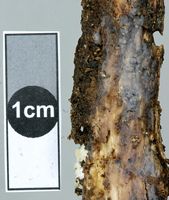
Owner: J.A. Cooper | 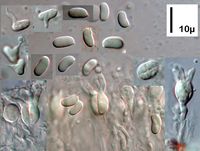
Owner: J.A. Cooper | 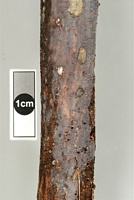
Owner: J.A. Cooper | 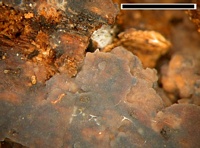
Caption: scale=2mm
Owner: J.A. Cooper | 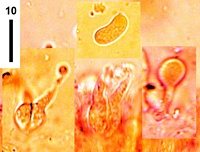
Caption: basidia and spore
Owner: J.A. Cooper | 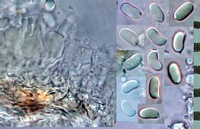
Owner: J.A. Cooper | 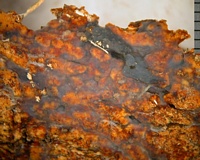
Owner: J.A. Cooper | 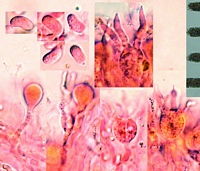
Owner: J.A. Cooper | 
Caption: Sebacina umbrina: a, basidia; b, paraphysoid; c, spores; d, dikaryophysis |
Article: McNabb, R.F.R. (1969). New Zealand Tremellales - III. New Zealand Journal of Botany 7(3): 241-261 (http://www.rsnz.org/publish/abstracts.php).
Description: Fructifications soft-gelatinous to waxy-gelatinous,
resupinate, thin, effused, indeterminate, forming areas to 10 cm in longest
dimension, pruinose, dull ochraceous brown when fresh, drying to a similarly
coloured vernicose crust; margins concolorous or slightly paler, adnate. In
section 150-250 µm thick, consisting of basal layer and hymenium, ascending
layer present in older fructifications. Basal layer thin, composed of indistinct,
agglutinated, hyaline hyphae lying parallel with substratum, clamp connections
present. Ascending layer when present composed of distinct, loosely interwoven,
clamped hyphae of irregular diameter. Hymenium composed of dikaryophyses, paraphysoids
and basidia: dikaryophyses variable in shape, ranging from cylindrical or narrowly
subclavate to finely and irregularly branched apically, projecting to 25 µm
beyond basidia; paraphysoids cylindrical, subclavate or clavate, often irregular
or strangulated, arising from fertile hyphae or hyphae bearing dikaryophyses,
hyaline, thin-walled, contents hyaline, non-granular, 35-62 x 4.5-9 µm, probasidia
initially clavate, later ovate to obovate, often short-stalked, proliferating
through conspicuous basal clamp connections, 13.6-17.4 x 8.7-11 µm, becoming
2-celled by longitudinal septa or longitudinally cruciate-septate; sterigmata
cylindrical, to 40 µm long. Basidiospores curved-cylindrical to allantoid, hyaline,
apiculate, 11-15.5 x 4-4.7-(5.2) µm. Germination by repetition.
Habitat: Dead angiosperm wood.
Notes: New Zealand specimens agree closely with
North American and European descriptions of Sebacina umbrina. The cylindrical
to clavate paraphysoids in S. umbrina have been variously interpreted.
Both Rogers (1935) and McGuire (1941) regarded them as gloeocystidia homologous
with those found in section Bourdotia, and included the species in subg.
Bourdotia and sect. Bourdotia respectively. On the other hand,
Wells (1957) considered that these structures differed from the gloeocystidia
of Bourdotia and regarded them as paraphysoids, as did Luck-Alien (1963).
Wells (1961) later termed them subcylindrical dikaryophyses. In New Zealand
specimens, dikaryophyses are extremely variable in shape and in some instances
closely resemble paraphysoids in size and shape, except for their irregularly
branched apices.
Sebacina umbrina has usually been considered an autonomous species but recently Wells (1961)
included it within his greatly expanded concept of Exidiopsis grisea
(Pers.) Bourd. & Maire. In his treatment of E. grisea Wells reduced
a number of European and North American species to synonymy. Oberwinkler (1963)
and Donk (1966) both rejected this concept of E. grisea and regarded
most of the European species as distinct. Luck-Alien (1963) remarked that she
would place Sebacina umbrina in Exidiopsis subg. Bourdotia.
|